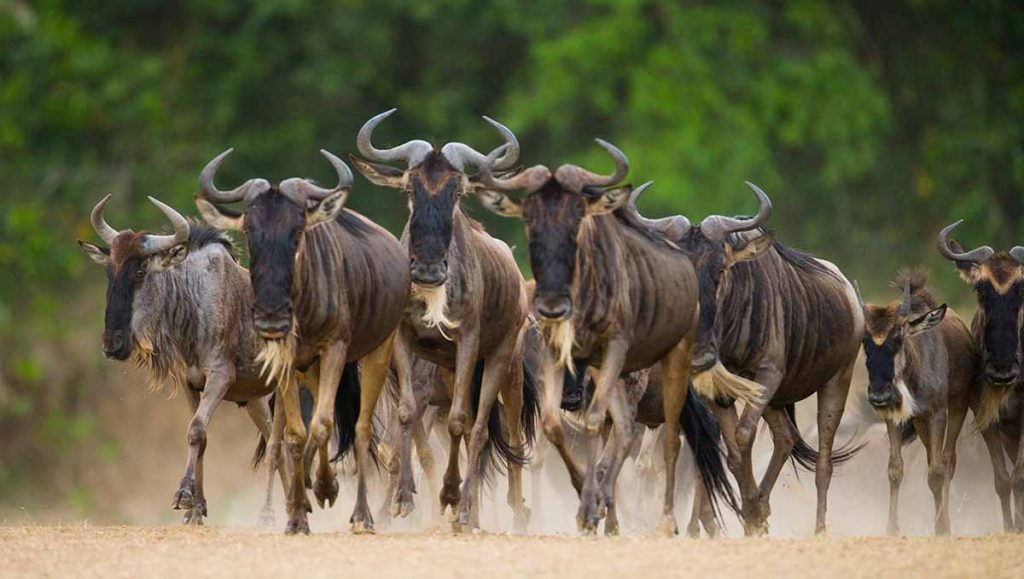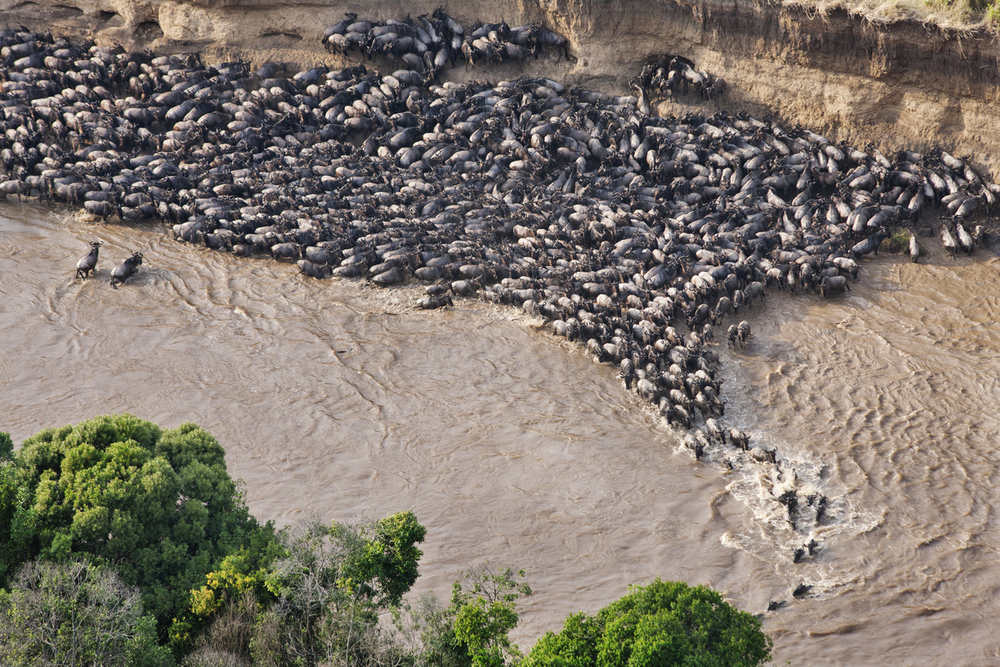6 facts about wildebeest. Wildebeest are some of the most numerous animals in Tanzania and Kenya, which travelers can see while on a Tanzania safari tour or Kenya safari, any time of the year. Wildebeests, also known as antelopes of the African plains are mammals that live and can be found not just in Kenya and Tanzania, but also the southern, eastern, central and southern parts of Africa. Any Africa safari to any of these regions of Africa therefore have you encountering these animals, in huge numbers most of the time.

Every single year since the 1960s, the wildebeests in Serengeti National Park move throughout the park regions making ay to Masai Mara National Reserve Kenya in one of the most spectacular animal shows in the world, the great wildebeest migration. There is so much to know about the wildebeests; below are the 6 facts about wildebeest to know as you plan to embark on that Africa safari, to say visit Kenya or Tanzania?
- Two Species of Wildebeest
There are 2 species of wildebeests, which is the black wildebeests, and the blue wildebeest. The blue wildebeest is more common and the most popular in most Kenya and Tanzania national parks especially Serengeti national Park Tanzania. The blue wildebeest is also known as the white-bearded wildebeests, with broad shoulders, muscular chest and distinctive muzzle.
The black wildebeest which is also known as the white-tailed gnu has a long white horse-tail. It is coated with a dark brown almost black coat, with long, dark coloured hair under the belly and forelegs.
- Social and Live in Huge Herds
One of the top 6 facts about wildebeest is that they are social animals that live in huge herds. The wildebeest herds often make up of both male and female, along with their offspring. With the fact that they live in huge herds, they are able to protect themselves from potential danger, all together.
- Constant Migration
Each year, wildebeest in the Serengeti-Mara ecosystem move over 800kms though cycles in search for greener pastures and water. The great wildebeest migration takes place in cycles, with the calving season usually setting off in the months of January through early March in the southern Serengeti National Park, and follow moving westwards as they head to the northern Serengeti region making way to cross to the Masai Mara National Reserve in Kenya. Witnessing the great wildebeest migration is one of the reasons why travelers visit Tanzania and visit Kenya, on migration safaris.

- Reproduction amongst wildebeest
The rut, which is the start of the mating season amongst wildebeest has territorial males prepare to mate. Throughout the mating season, about 150 wildebeest form from the bigger herds of the herds. The male wildebeest make a show of wooing the females, marking their territories by urinating, defecating and spreading this in their particular areas that they deem as theirs. Wildebeests can mate about 2 times per minute. Gestation is about 8 to 8.5 months. The female wildebeest give birth at the centre of the herds and do not find isolated places; they give birth to only one calf.
- Calves Can Walk almost after birth
Calves of wildebeests are able to walk upon being birthed. Once the female gives birth, she licks the calf and within about 6 minutes from birth the calves get up and gets nursed, and within a short while walk along with their mothers as the herds move around grazing.
- Herbivores
Wildebeests are herbivores and thus are found in areas that they can find food and due to seasonality move. Wildebeests are strictly grazers preferring sweet stocky grass, as well as succulent plants. Wildebeests eat quite a lot; they eat right from sunrise, rest at around mid-day and then continue thereafter until sunset.
As you plan to embark on an Africa safari tour and looking forward to seeing the wildebeest, the above 6 facts about wildebeest shall help you know a little more about the animals. Apart from wildebeests however, there are a number of other animals, grazers, that migrate along with the wildebeests during the wildebeest migration and they include impalas, gazelles, and zebras among others. other animals to look out for while on a Kenya safari or Tanzania safari tour include all the big 5 animals including lions, leopards, elephants, buffaloes, and rhinos; as well as so many other animals like giraffes, cheetahs, hyenas, among so many others.
Reach out to a knowledgeable tour operator to help you create amazing safari options for you and get to see the different African wildlife including huge herds of wildebeests and what best time but to see them whilst on a migration safari!


